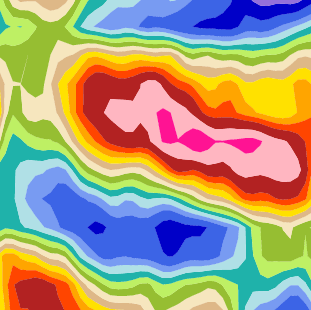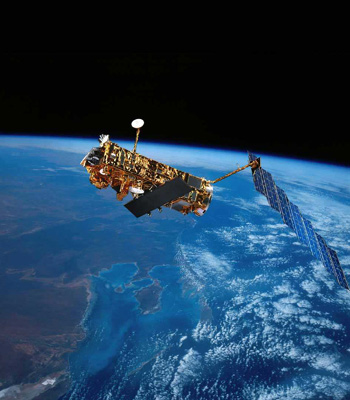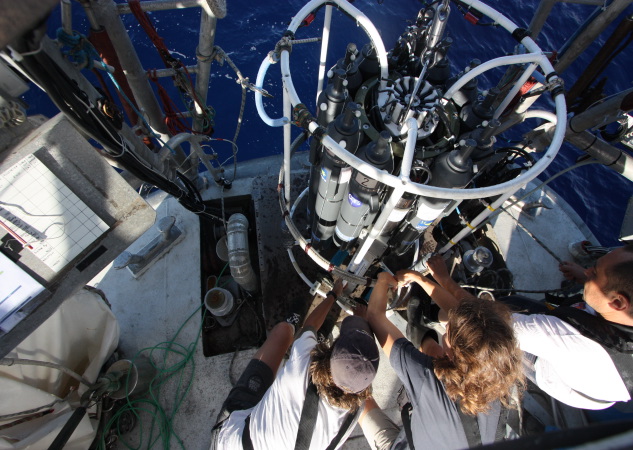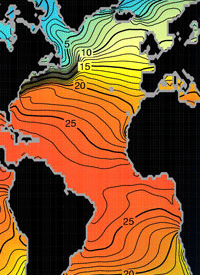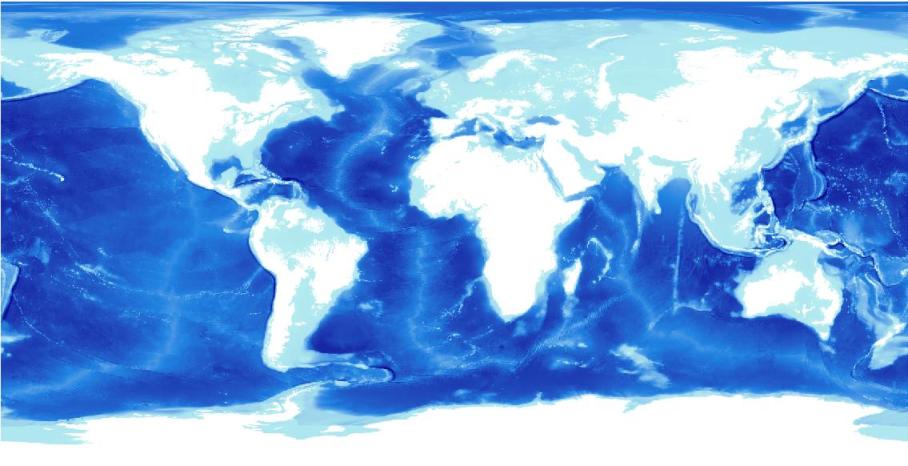Data assimilation in Mercator Ocean systems
Since its creation, the Mercator operational oceanography system has adopted a strategy for incremental improvement of assimilation systems. The initial version of the Mercator Assimilation System (SAM), named SAM1, consisted of an optimal interpolation scheme and was built using SOFA, a reduced-order optimal interpolation software package which had proved its worth for assimilating altimetry data. SAM1 was then improved so that it could assimilate satellite observations (altimetery and surface temperature measurements) and in situ measurements (XBT, profilers). SAM1 then became a multivariate/multidata version used for operational applications which remained in activity until 2007. The SAM2 assimilation system is the second generation of the Mercator Assimilation System. This tool was built around a SEEK (Singular Evolutive Extended Kalman filter) analysis kernel. Compared to the previous version, its main characteristic is its improved modelling of the first-run error by representation of a 3D multivariate error subspace. This made it possible to overcome some known limitations of the SAM1 tool such as its unsuitability for shallow zones and tropical oceans as well as the difficulty of controlling the surface layer efficiently. The formulation of the SEEK/LETKF analysis kernel is a significant innovation due to its extremely efficient processing of large volumes of observation measurements. The first release of this tool also included two major parameterizations: a local approach for the analysis (already used in SAM1) and a variance adaptation scheme which improved the coherence of the error statistics entering the filter. The system in its initial SAM2V1 version was gradually deployed as of 2007 for all of the Mercator operational and reanalysis systems. It then underwent a significant upgrade in 2010-2011 and is henceforth the main structure of the current version.
Moreover, and in order to better constrain the large-scale component solutions, a complementary module was developed to correct large-scale (spatial and temporal) systematic thermohaline bias. It consists of a 3D-Var analysis (available with the SAM tool) of temperature and saline innovations from the last few cycles.

